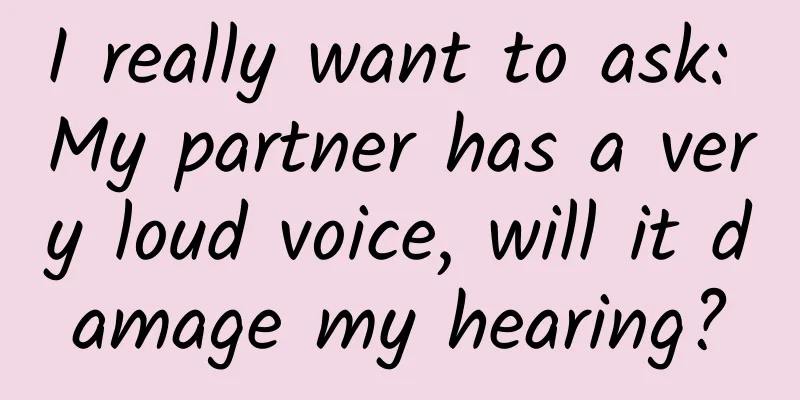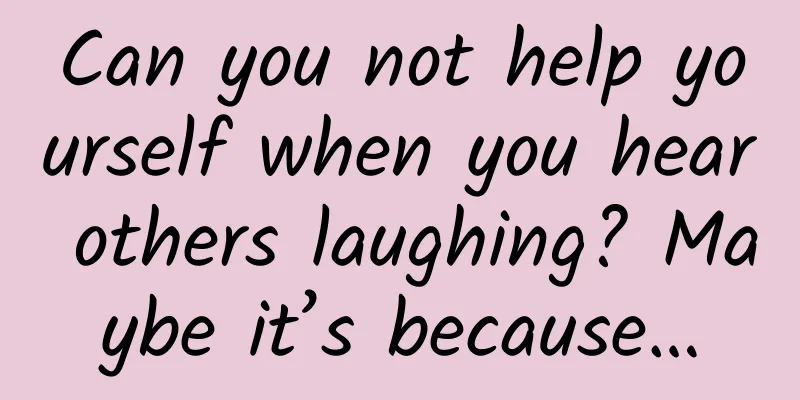I really want to ask: My partner has a very loud voice, will it damage my hearing?

|
Have you ever encountered a situation where someone around you has a very loud voice and it is like thunder rumbling in your ears when they talk to you? Especially when this loud-voiced person may be your parent, partner, friend or colleague? First of all, the answer is: if this situation is occasional and not too frequent, it is usually not enough to cause long-term damage to our hearing. But if this situation persists for a long time and exists in large quantities, it may indeed have a certain impact on our hearing. It is recommended to take some protective measures, such as asking the other party to lower the volume or wear earplugs. How do ears capture sound? Sound is an important medium for communication and perception of the world. How does the ear capture sound and how do we hear it? The mechanism behind this is both complex and delicate, involving the microscopic structure inside the ear. Copyright images in the gallery. Reprinting and using them may lead to copyright disputes. The ear can be divided into three main parts: the outer ear, the middle ear, and the inner ear. The outer ear includes the pinna and the ear canal, which collect sound waves and direct them to the eardrum. When the sound waves reach the eardrum, they cause it to vibrate. These vibrations are then transmitted and amplified by three small bones in the middle ear—the malleus, incus, and stapes—and eventually reach the cochlea in the inner ear. The cochlea is the core of the inner ear. It contains a fluid called cochlear fluid and thousands of hair cells. Hair cells are special nerve cells whose main function is to convert the mechanical vibrations of sound into electrical signals, which are then transmitted to the auditory center of the brain through the auditory nerve. The auditory center then interprets these signals into sounds that we understand. The tips of the hair cells are filled with tiny hair-like structures called cilia, which are arranged in different lengths to form a gradient-like structure that allows the cochlea to respond to sounds of different frequencies. When sound vibrations pass through the fluid in the cochlea, the cilia move with them. Cilia of different lengths are sensitive to sounds of different frequencies, with shorter cilia being sensitive to high frequencies and longer cilia being sensitive to low frequencies. However, when the sound is too loud, the cilia are over-stimulated, causing them to bend excessively or even break. This damage is irreversible because the cilia cannot repair themselves. Once the cilia are damaged, the function of the hair cells will be affected or even die, which can lead to permanent hearing loss. This is why long-term exposure to high volume environments can cause serious damage to our hearing. Beware of high decibel levels In order to protect our hearing, we should avoid long-term exposure to high-decibel environments, but in daily life, you may not realize that some sounds may be quietly damaging your hearing. The intensity of sound is measured in decibels, and different decibel levels affect hearing in different ways. Generally speaking, the volume of people in normal conversation is about 60 decibels. When the volume reaches 70 to 80 decibels, such as the sound of a vacuum cleaner or hair dryer, we may start to feel uncomfortable. Long-term exposure to environments above 85 decibels, such as the roar of motorcycles, the sound of chainsaws or the sound of speakers at rock concerts, may cause damage to our hearing. Especially when the volume exceeds 100 decibels, such as the sound of a jet taking off or gunfire, even brief exposure can cause permanent hearing loss. So, what are some signs that your hearing may be damaged? First, if you find yourself needing to turn up the volume of the TV or music higher than usual, or having trouble hearing people on the other end in noisy environments or having trouble talking on the phone , these are early signs of hearing loss. Secondly, if you often feel buzzing in your ears, or other persistent tinnitus, or feel discomfort or pain in your ears , this may also be a sign of hearing loss. If you suspect that your hearing has been damaged, please consult a professional otolaryngologist in time for appropriate diagnosis and treatment. What behaviors can damage hearing? 1 I like to turn up the volume of my electronic devices When watching videos or listening to music, people like to turn up the volume very loudly. This behavior not only disturbs others, but also exposes the ears to a high-volume environment for a long time, which not only causes temporary hearing loss, but may also cause permanent hearing damage. 2 Frequent use of headphones Headphones provide us with a private listening space, but if used frequently, they may cause ear pain. Especially when using headphones in noisy environments such as roads, subways, and buses, we often turn up the volume of the headphones in order to hear clearly. Frequent use of headphones not only causes physiological pain, but also indicates deeper hearing problems. 3 Noisy work environment The roar of construction sites, the sound of machinery in factories, the hustle and bustle of airports - these high-decibel working environments may become invisible killers that erode our hearing. 4 Often attend concerts The excitement of rock concerts, the revelry of nightclubs - these high-volume entertainment activities, especially the shocking beats of heavy metal or electronic music, can bring short-term happiness, but they can also inadvertently damage our hearing. It may cause serious harm to the ears. 5 Using noisy equipment The sharp sound of a chainsaw, the roar of a drill, the roar of a motorcycle or the deafening sound of a gun - the noise generated by these devices far exceeds the safe decibel level and poses a direct threat to our hearing. 6 Neglecting ear health Earwax accumulation, ear infections or ear canal damage may be the hidden causes of hearing loss. These seemingly insignificant problems, if not paid attention to and treated, may gradually accumulate and eventually affect the quality of our hearing. How to protect your hearing? 1 Adjust the volume appropriately When enjoying audio or video content, we should consciously control the volume of the player, keeping it at 40-50 decibels and not exceeding 60% of the maximum volume to reduce potential damage to hearing. In addition, you should arrange your daily listening time reasonably and avoid continuous listening for more than 1 hour. In public places, you should also try to stay away from audio equipment with excessive volume to reduce unnecessary noise exposure. 2 Give priority to external speakers and reduce the use of headphones Give priority to external audio and minimize the use of headphones as much as possible to avoid the headphones exerting continuous pressure on the eardrum and reduce the risk of hearing damage. Even at a lower volume, it is recommended not to use headphones for more than 1 hour a day. 3 Take protective measures In unavoidable noisy environments, such as construction sites or concerts, wearing earplugs or using headphones with noise reduction function can significantly reduce the impact of external noise on the ears. Proper protective measures can effectively protect our hearing. 4 Give your ears the rest they need It is important to give your ears proper rest time after prolonged listening to music or exposure to noise. This can be achieved by engaging in relaxing activities such as reading, meditation, deep breathing, or sleeping in a quiet environment. Regular rest periods can reduce or eliminate stimulation to the ears and reduce hearing fatigue. 5 Check your hearing regularly For people who are often in noisy environments, such as musicians, construction workers, and the elderly, regular professional hearing examinations are essential. This allows hearing problems to be discovered in time and necessary preventive or therapeutic measures to be taken to prevent further deterioration of hearing. 6 Maintain ear hygiene Keeping your ears clean is the basis for protecting your hearing. Avoid using cotton swabs or other sharp objects to insert into the ear canal to clean earwax to avoid damaging the ear canal and eardrum. If you experience ear discomfort or signs of infection, you should seek medical help immediately to prevent minor problems from turning into greater health risks. References [1] Sun Hong, Zhang Luo. Otorhinolaryngology, Head and Neck Surgery[M]. 9. People's Medical Publishing House, 2018. [2] Li Jun. How to prevent hearing loss in daily life? [J]. Environmental Economy, 2015, (10): 33. Planning and production Author: Zeng Xinyue Popular Science Author Reviewer: Pan Chunchen, Associate Chief Physician of Otolaryngology and Head and Neck Surgery, The First Affiliated Hospital of University of Science and Technology of China Planning: Yinuo Editor丨Yinuo Proofreader丨Xu Lailinlin |
>>: Is there a new form of magnetism? Scientists have discovered cross magnetism!
Recommend
Second category e-commerce advertising!
Second-class e-commerce advertising : Tencent adv...
APP promotion methods: 10 methods to effectively increase APP download and registration rate!
On my first day at work in 2019, I was assigned n...
How companies plan their business strategies for marketing and promotion methods!
The content of the article describes in detail th...
Foshan Distribution Mini Program Mall, what are the functions and advantages of the WeChat Mini Program distribution function?
Usually, if stores want to attract a highly stick...
Dubai considers deploying driverless cars in metro stations and malls
Recently, driverless cars were put into trial oper...
The “disappearing” mobile Internet
“Mobile Taobao” has finally been renamed “Taobao”...
Looking for Easter eggs in the code, Google is no longer the Google you know
[[144804]] Google, the world's largest Intern...
Musk promoted Tesla, but 3025 electric vehicles were removed from the shelves in China on the same day
At noon on July 6, Beijing time, Musk showed the ...
[Case sharing] How did she gain 1 million followers in just two months?
1. My date was disrupted I was supposed to go on ...
Why is sepsis so likely to kill people? Six facts you must know
Speaking of "sepsis", you may feel unfa...
Can fish oil lower blood lipids? Can sweating more after a fever help you get better faster? The truth is...
Do you take medicine when you have symptoms of po...
Without the traffic from NetEase and Alipay, how can ordinary products spread themselves and go viral?
There are unknown secrets behind every screen-swe...
Can't dog poop be left in the flowerbed to be used as fertilizer? Why do we have to pick up dog poop?
"You don't have to pick up the poop when...
Tips for attracting customers for educational institutions!
In the education circle in 2020, there is such a ...
A short sentence of blessing for the Chinese Valentine's Day. A blessing for the Chinese Valentine's Day for your boyfriend or girlfriend or lover.
The Chinese Valentine's Day in 2020 is here. ...









